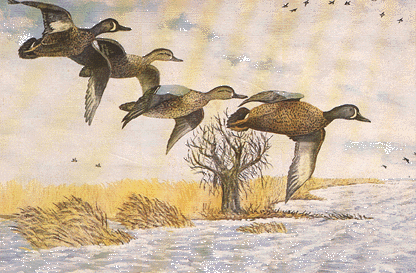
The small ones were plated to close
The big ones are planted 8 to 10 inches apart.
 |
Turnips, an excellent late-fall forage, can reach maximum production in 80
to 90 days after establishment. Turnips can range from predominately leaf to
root varieties. Turnips have excellent nutritional value with high
energy content (leaves have 69% total digestible nutrients; roots have 86%
total digestible nutrients), Plant turnips in late July or early August for
late fall grazing. A brassica that is very winter hardy. Will
stay green to provide some late fall and winter feeding for wildlife.
Brassicas forages are high quality, high yielding, and fast growing crops
that are high in protein. Members of the Brassica family include kale,
rape, turnips. Brassicas have been use by farmers for years now an within
the past few years have been found to be very beneficial for Whitetail
deer.
Generally they produce high quality forage for deer in late summer, fall,
and in the winter months. Brassicas are annual crops which are highly
palatable and easily digestible for whitetail deer. Both the tops (stems
and leaves) and roots (bulbs) deer will eat and are very nutritious.
Brassicas require good soil drainage and a soil pH between 5.3 and 6.8.
Seeds should be planted in a firm, moist, seedbed with 6-8 inch rows.
Fertility requirements are similar to wheat
Plant 3 to 4 pounds per acre.
Pricelist |
|




